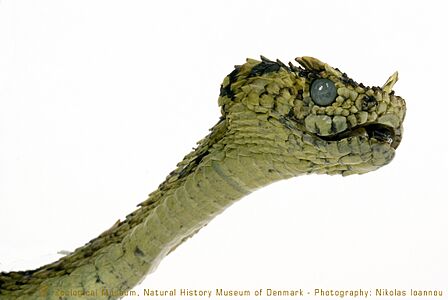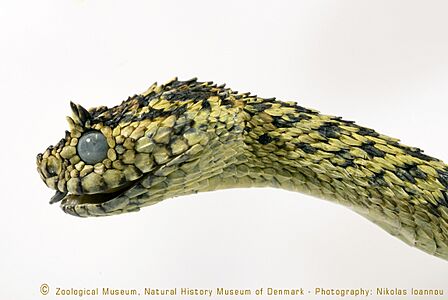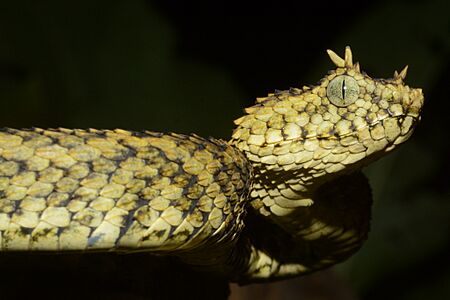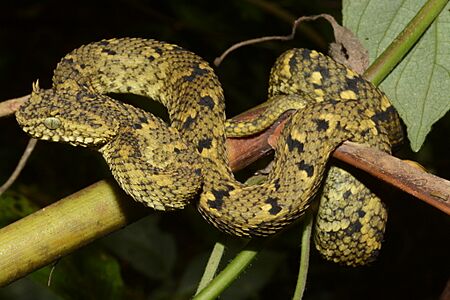Atheris ceratophora facts for kids
Quick facts for kids Atheris ceratophora |
|
|---|---|
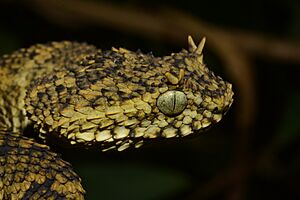 |
|
| Conservation status | |
| Scientific classification | |
| Genus: |
Atheris
|
| Species: |
ceratophora
|
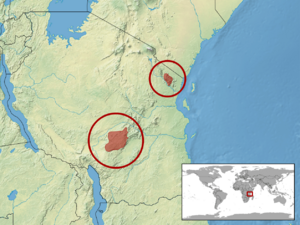 |
|
| Synonyms | |
|
|
The Atheris ceratophora is a special kind of venomous viper. It lives only in a few mountain ranges in Tanzania, Africa. This snake is famous for the unique horn-like scales above its eyes. For a long time, it was the only horned tree viper known in Africa. But in 2011, another horned viper, Atheris matildae, was discovered, also in Tanzania. No different types (subspecies) of Atheris ceratophora are known today.
Contents
Meet the Horned Bush Viper!
This snake can grow up to about 54 centimeters (21 inches) long. Females are usually a bit bigger than males. A male snake might reach about 42 centimeters (16.5 inches) long. Its tail can be around 8 centimeters (3 inches) long.
What Makes It Unique?
You can easily spot this snake because of the 3 to 5 horn-like scales above each eye. These are called superciliary scales. The scale at the very tip of its nose, called the rostral scale, is wide and flat. It has 9 scales on its upper lip. The first 3 scales on its lower lip touch the first pair of chin shields.
Scales and Colors
Around the middle of its body, this snake has 21 to 25 rows of scales on its back. It has 142 to 152 scales on its belly. The scales under its tail number between 41 and 56.
The snake's main color can be yellowish-green, olive, gray, or black. It might also have black spots or stripes. These markings can sometimes have yellow or white edges. Its belly color ranges from a dull orange to almost black. It might also have dark spots on its belly.
Where Does It Live?
The Atheris ceratophora is found in the Usambara and Uzungwe Mountains. Both of these mountain ranges are in Tanzania. Scientists think it might also live in the Uluguru Mountains. The first place this snake was officially found was in the Usambara Mountains.
Its Home Environment
This snake lives in woodlands and forests. You can find it in grass and low bushes. It usually stays about 1 meter (3 feet) above the ground. It prefers altitudes between 700 and 2,000 meters (2,300 to 6,500 feet) high.
Snake Behavior
Like other Atheris snakes, the horned bush viper is probably most active at night. It might also be active during dawn (when the sun rises) or dusk (when the sun sets). This means it hunts and moves around when it's not bright daylight.
Common Names
People have many names for this snake:
- Usambara bush viper
- Horned bush viper
- Eyelash bush viper
- Usambara mountain bush viper
- Horned tree viper
- Usambara tree viper
Gallery
-
A horned bush viper seen in its natural home in Tanzania.



